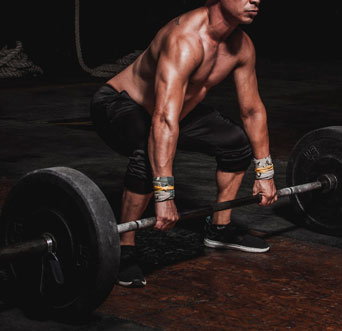The squat is often referred to as the “king of all exercises” for a good reason. This compound movement, which involves bending the knees and hips to lower the body, is a cornerstone of strength training and functional fitness.
In this article, we will explore the world of squats, their history, benefits, proper technique, variations, and how to incorporate them into your fitness routine.
A Brief History of the Squat
The squat has been a fundamental human movement pattern for centuries. Historically, it was a natural part of daily life, as people frequently had to squat to perform various tasks.
In the world of strength training, the squat gained prominence in the early 20th century and has since become a symbol of physical prowess.
The Benefits of Squatting
- Leg Strength: Squats primarily target the quadriceps, hamstrings, and glutes, leading to substantial gains in leg strength.
- Full-Body Workout: Squats engage numerous muscle groups, including the core, lower back, and upper body, making them an effective full-body exercise.
- Functional Strength: Squats replicate movements used in daily life, such as lifting objects or getting up from a seated position, making them highly functional.
- Hormonal Response: Compound movements like squats stimulate the release of growth hormone and testosterone, which can aid in muscle growth and fat loss.
Proper Squat Technique
- Setup: Stand with your feet shoulder-width apart, toes slightly pointing outward. Keep your chest up, shoulders back, and core engaged.
- Descent: Begin the movement by pushing your hips back and bending your knees. Keep your back straight, and lower your body as if you were sitting into an invisible chair.
- Depth: Ideally, aim to descend until your thighs are parallel to the ground or lower (known as a “parallel squat”). However, the depth may vary depending on your flexibility and comfort.
- Ascent: Push through your heels and straighten your legs to return to the starting position. Exhale as you rise.
Common Mistakes to Avoid
- Knee Overextension: Avoid allowing your knees to extend beyond your toes. Keep your knees in line with your feet.
- Round Back: Maintain a straight, neutral spine throughout the movement. Avoid rounding or arching your back.
- Incomplete Range of Motion: Strive to achieve proper depth in your squat, but avoid going too low if it compromises your form.
- Neglecting Warm-Up: Always warm up with lighter squats or mobility exercises to prepare your body for heavier lifting.
Variations of the Squat
- Back Squat: The barbell is placed across your upper back, behind your neck. It’s the most common and effective squat variation for building overall leg strength.
- Front Squat: The barbell is held across the front of your shoulders. It emphasizes the quadriceps and challenges core stability.
- Goblet Squat: You hold a dumbbell or kettlebell close to your chest. It’s an excellent option for beginners or those with limited equipment.
- Overhead Squat: The barbell is held overhead, working the shoulders, core, and lower body. It requires excellent mobility and stability.
Incorporating Squats into Your Routine
To make the most of squats, integrate them into a comprehensive strength training routine.
Vary your squat style and rep ranges to continually challenge your muscles and promote growth.
Conclusion
The squat is a fundamental movement that offers numerous benefits, from building leg strength to enhancing overall functional fitness.
When performed with proper technique and integrated into your workout regimen, squats can be a catalyst for transformative changes in your physical strength and well-being.
So, embrace the art of squatting and unlock the potential for a stronger, more resilient body.




